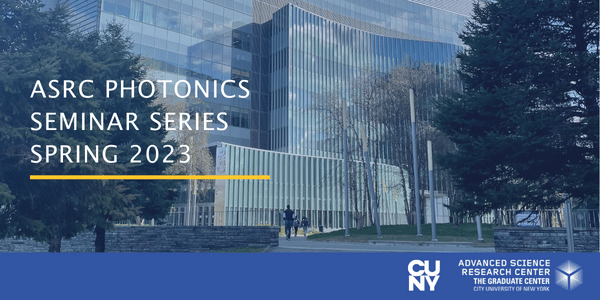
In this one-hour seminar, Yonatan Sivan, Ben-Gurion University, will be presenting a talk titled:
“Hot” carriers in metal nanostructures – when they matter, and when they do not…
Abstract – In the last couple of decades, “hot” carriers in metal nanostructures have been simultaneously an inspirational concept to which a series of effects were ascribed, but also a source of confusion and hot debates. My talk would be aimed at improving our understanding of the role played by “hot” carriers in metals as well as transparent oxides via rigorous modelling of their generation process and dynamics.
I will start by presenting a self-consistent theory of the steady-state electron distribution in metals under continuous-wave illumination which treats, for the first time, both thermal and non-thermal effects on the same footing. I will show that the number of non-thermal electrons (i.e., the deviation from thermal equilibrium) is very small, so that the power that ends up generating these non-thermal electrons is many orders of magnitude smaller than the amount of power that leads to regular heating [1]. I will then review in detail a recent experimental quantitative confirmation of our theory obtained in current measurements through a plasmonic molecular junction [2]; peculiarly, our interpretation of the experimental data is quite different from that offered in the original paper in which it appeared.
In the second part of the talk, I shall discuss reports of observation of nonthermal electrons in two classes of experiments. First, I will review our re-interpretation of the exciting claims on the possibility to enhance chemical reactions with non-thermal electrons from metals as pure thermal effects [3], showing that in many cases, the role of thermal effects was grossly underestimated. Then, I will show that non-thermal electrons do manifest themselves in metal photoluminescence experiments, explain why they sometime “look” like thermal carriers and resolve several decade long disagreements in the literature [4].
At the end of the talk, I will discuss the role played by “hot” carriers generated by ultrafast pulses, first in photoluminescence experiments, and then in the determination of the nonlinear optical response of transparent conducting oxides [5].
References
[1] Dubi & Sivan, Light: Science & Applications 8, 89 (2019), [2] Dubi, Un & Sivan, Nano Letters 22, 2127 (2022), [3] Sivan & Dubi, Applied Physics Letters: Perspectives 117, 130501 (2020), [4] Sivan & Dubi, ACS Nano 15, 8724 (2021), [5] Sarkar, Un & Sivan, Phys. Rev. Applied 19, 014005 (2023).
Bio – Prof. Yonatan Sivan is an Associate Professor at the School of Electrical and Computer Engineering at the Ben-Gurion University of the Negev, Israel. In 2008 he earned a PhD in Physics from Tel-Aviv University. For more see: http://orcid.org/0000-0003-4361-4179

